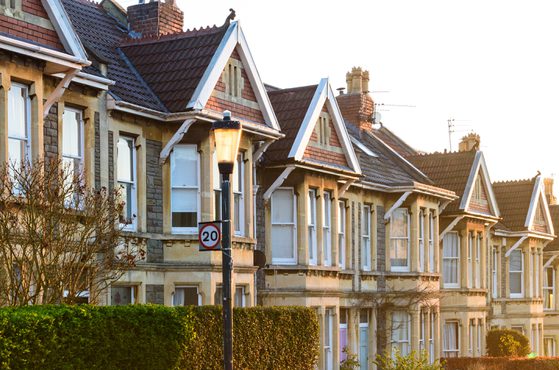Christmas markets & public safety — key legal duties for organisers & retailers

We explore safety considerations around Christmas markets and outline practical steps to comply with relevant safety legislation.
Read more
We make the difference. Talk to us: 0333 004 4488 | hello@brabners.com
AuthorsAdam Jason
5 min read
Property & Construction, Housing, Building Safety, Procurement, Health & Safety, Public Sector

The Phase 2 Grenfell Report makes fascinating (if not uncomfortable) reading for those in the housing and construction sectors.
Here, Legal Director Adam Jason highlights key legal themes arising from the report’s recommendations that you need to know about — from the creation of a new construction regulator to recognising fire engineers as a protected profession.
While the report was clear in its criticism of the catalogue of human errors that led to the tragedy, it was also unequivocal in its criticism of the regulatory regime that governed the refurbishment works.
The current regime is too complex and fragmented, with blurred lines between its regulatory functions and vested commercial interests. Significant criticism was equally levelled at central government (for not acting on previous reports) and the private entities responsible for certifying the safety of the products used in (and the design of) the refurbishment works.
To resolve what can only be described as national systemic failings, the report makes a number of recommendations.
A single ‘construction regulator’ should be created to regulate the construction industry. This should report to a single Secretary of State and a Chief Construction Advisor should be appointed to advise them.
The construction regulator should be responsible for assessing the conformity of construction products with the requirements of legislation, statutory guidance and industry standards. The Construction Regulator will then certify as appropriate.
Such certificates should contain copies of all test results and manufacturers should be required to provide the full testing history for the product and inform the regulator of any material change in circumstances. Manufacturers should also be required by law to provide (on request) copies of all test results that support claims about fire performance.
New fire performance test methods should be developed in conjunction with the professional and academic communities.
The Government should appoint an independent panel to consider whether it’s in the public interest for building contractor functions to be performed by those with a commercial interest in the process. The same panel should consider whether all building control functions should be performed by a national authority, rather than at a local level.
The definition of ‘higher-risk building’ (HRB) should be urgently reviewed, as the categorisation of HRBs on height alone is arbitrary. A more relevant factor would be the nature of a building’s use and likely presence of vulnerable people, for whom evacuation in the event of a fire or other emergency would likely present difficulty.
The profession of ‘Fire Engineer’ should be recognised and protected by law, with an independent regulator established to regulate the profession and the Government encouraged to increase the number of places on high-quality Masters-level courses in fire engineering. It should also be a statutory requirement for a fire safety strategy to be produced by a registered fire engineer in respect of HRBs.
BS 9414 wrongly encourages unqualified people to assess the safety performance of external wall systems. The Government should make it clear that BS 9414 shouldn’t be used as a substitute for assessment by a suitably qualified fire engineer.
Contractors undertaking works to HRBs should be licensed to ensure competence and any application for Gateway 2 approval should be supported by a personal undertaking from a director or senior manager of the principal contract (under the Building Regulations) that all reasonable care has been taken to ensure that the building is safe on completion.
It should be a statutory requirement for building control application approval at Gateway 2 to be supported by a statement from a senior manager of the principal designer (under the Building Regulations) that all reasonable steps have been taken to ensure that the building as designed will be safe on completion.
Statutory guidance should include clear warnings that it isn’t definitive and compliance won’t automatically result in compliance with the Building Regulations.
Approved Document B should be reviewed as a matter of urgency. The report doesn’t specify any particular changes other than that the approach to ‘stay put’ strategies should be reconsidered, as such strategies should only be deployed where there’s a negligible risk of external fire spread.
What’s abundantly clear from the report is that the parties responsible for the design and construction of refurbishment works failed to discharge their contractual obligations to design and construct the works in accordance with the contractual duty of care and statutory requirements.
The report’s analysis of the expert and factual witness evidence presented to the Inquiry makes sombre reading and presents a salient reminder to those entering into agreements for the design and construction of projects to include (and equally, to understand) appropriate contractual provisions regarding standards of care and selection of materials for use within construction projects.
Construction projects require careful advice and support at every stage of the process — from inception to completion — to ensure that your legal and commercial interests are protected.
If you’re looking to procure a construction project, seek advice on an existing issue or navigate the new ‘building safety regime’, our team of experienced lawyers is here to support you.
Plus, with one of the UK’s largest dedicated housing law teams, we handle the full range of matters for regional and national developers, affordable housing providers, housebuilders and funders — providing the housing sector with one single place to go for all legal needs.
Need advice? Give us a call on 0333 004 4488, email us at hello@brabners.com or complete our contact form below.
Adam Jason
Adam is a Legal Director in our construction team and leads our focus on the logistics sector.
Read more
Loading form...

We explore safety considerations around Christmas markets and outline practical steps to comply with relevant safety legislation.
Read more

We explore the judgment and what it means for landlords when tenants refuse access for essential safety checks.
Read more

We provide an overview of key construction law cases from 2025 and explore the practical implications and emerging trends that are shaping the industry.
Read more